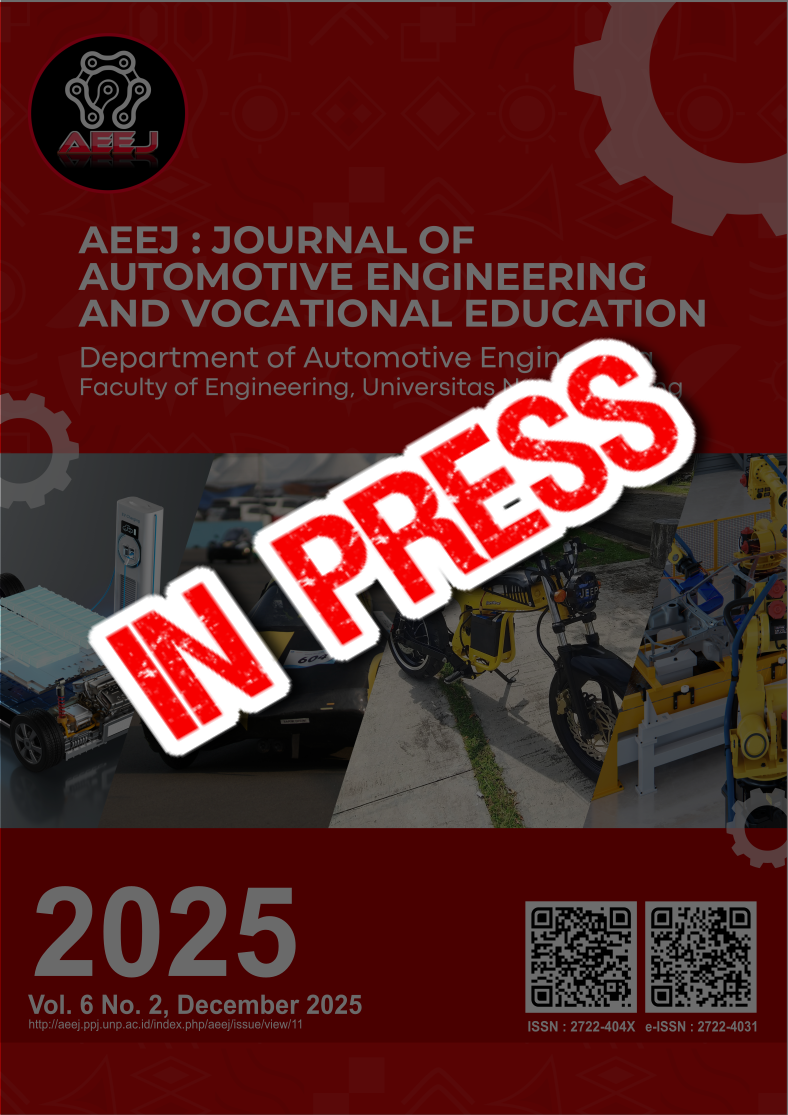NOx Content Analysis In Ambient Air: Public Policy Perspectives And Implications For Sustainable Development In Padang City
##plugins.themes.academic_pro.article.main##
Abstract
This paper presents data from the ambient air quality monitoring of Padang City and its implications for sustainable development public policy. Urban growth and transportation and industrial activities have the potential to increase nitrogen gas emissions. Air monitoring was conducted at strategic locations in Padang City that represent anthropogenic activities. The nitrogen gas concentration data obtained were analyzed descriptively and spatially to identify the level of pollutants in the air. Monitoring results were linked to sustainable development indicators, particularly those related to public health (SDG 3) and cities and settlements (SDG 11). This paper aims to provide input for policy makers to strategize the sustainable development of Padang city.
##plugins.themes.academic_pro.article.details##

This work is licensed under a Creative Commons Attribution 4.0 International License.
References
[2] E. Besra, “Potensi Wisata Kuliner Dalam Mendukung Pariwisata Di Kota Padang,” J. Ris. Akutansi Dan Bisnis, vol. 12, no. 1, pp. 74–101, 2012.
[3] I. S. Nasution, H. Siringo-ringo, D. A. Putri, S. R. Siregar, N. A. P. Siregar, and N. H. Sirait, “Hubungan Antara Emfisema , Kanker Paru dan Pentingnya Udara Bersih,” HELIUM - J. Heal. Educ. Law Inf. Humanit., vol. 2, no. 1, pp. 307–311, 2025.
[4] Geneva: World Health Organization, “WHO global air quality guidelines,” Part. matter (PM2.5 PM10), ozone, nitrogen dioxide, sulfur dioxide carbon monoxide, pp. 1–360, 2021.
[5] E. Zaputra, E. Chatra, and E. Arif, “Komunikasi lingkungan dalam pencegahan kebakaran hutan dan lahan lingkungan hidup dan kehutanan provinsi riau,” pp. 324–330, 2023.
[6] E. Sulistiono et al., Kesehatan Lingkungan, vol. 10. Jombang: AKARA SASTRA MEDIA, 2025. doi: 10.14710/mkmi.10.2.1-10.
[7] R. Kumalawati et al., INVENTARISASI PERLINDUNGAN LAPISAN OZON (Studi di Kota Banjarmasin). Banjarmasin: Lambung Mangkurat University Press Banjarmasin, 2020.
[8] N. Abdillah, “Penataan ruang Kota Jakarta berbasis net zero emission: dampak emisi pembangkit listrik,” Spat. Rev. Sustain. Dev., vol. 1, no. 1, pp. 23–43, 2024, doi: 10.61511/srsd.v1i1.2024.712.
[9] A. Budiyono, “Pencemaran Udara: Dampak Pencemaran Udara pada Lingkungan,” Ber. Dirgant., vol. 2, no. 1, p. 7, 2001, [Online]. Available: http://jurnal.lapan.go.id/index.php/berita_dirgantara/article/view/687/605%0Ahttp://jurnal.lapan.go.id/index.php/berita_dirgantara/article/view/687
[10] I. W. R. Aryanta and S. E. Maharani, “Dampak Buruk Polusi Udara Bagi Kesehatan Dan Cara Meminimalkan Risikonya,” J. Ecocentrism, vol. 3, no. 2, pp. 47–58, 2023, doi: 10.36733/jeco.v3i2.7035.
[11] V. Rahmawati, A. L. Hayat, and A. Salam, “Dampak Pencemaran Udara terhadap Kesehatan Masyarakat di Perkotaan,” Profit J. Manajemen, Bisnis dan Akunt., vol. 3, no. 3, pp. 17–24, 2024, doi: 10.58192/profit.v3i3.2246.
[12] A. M. Siregar, C. A. Siregar, and M. Yani, “Rekayasa Saluran Gas Buang Sepeda Motor Guna Mengurangi Pencemaran Udara,” J. IOP Sci., vol. 2, no. 2, pp. 171–179, 2019, [Online]. Available: https://creativecommons.org/licenses/by-sa/4.0/
[13] Lusiana and M. Suryani, “Metode SLR untuk Mengidentifikasi Isu-Isu dalam Software Engineering,” vol. 3, no. 1, 2013.
[14] B. R. Barricelli, F. Cassano, D. Fogli, and A. Piccinno, “End-User Development , End-User Programming and End-User Software Engineering : a Systematic Mapping Study,” vol. 149, pp. 101–137, 2019.
[15] M. Razavian, B. Paech, and A. Tang, “Empirical Research for Software Architecture Decision Making,” pp. 360–381, 2018, doi: 10.1016/j.jss.2018.12.003.
[16] R. T. S. Hariyati, “MENGENAL SISTEMATIC REVIEW THEORY DAN STUDI KASUS,” vol. 13, no. 2, pp. 124–132, 2010.
[17] L. Naizabayeva, D. Zaitov, and N. Seilova, “Integrating Smart Traffic Systems with Real-Time Air Quality Monitoring to Minimize Emissions and Improve Urban Health,” Procedia Comput. Sci., vol. 251, pp. 603–608, 2024, doi: 10.1016/j.procs.2024.11.156.
[18] M. Brauer et al., “Global burden and strength of evidence for 88 risk factors in 204 countries and 811 subnational locations, 1990–2021: a systematic analysis for the Global Burden of Disease Study 2021,” Lancet, vol. 403, no. 10440, pp. 2162–2203, 2024, doi: 10.1016/S0140-6736(24)00933-4.
[19] D. Jain, S. Bhatnagar, and K. Sachdeva, “Impact of degrading air quality on mode choice and emissions – Study of ten global cities,” World Dev. Sustain., vol. 1, no. February, p. 100002, 2022, doi: 10.1016/j.wds.2022.100002.
[20] Y. Cui et al., “Estimation of the primary air pollutant emission levels of in-use gasoline vehicles and their influencing factors in Beijing, China,” Atmos. Environ. X, vol. 25, no. April 2024, p. 100310, 2025, doi: 10.1016/j.aeaoa.2024.100310.
[21] W. de Vries, “Impacts of nitrogen emissions on ecosystems and human health: A mini review,” Curr. Opin. Environ. Sci. Heal., vol. 21, no. x, p. 100249, 2021, doi: 10.1016/j.coesh.2021.100249.
[22] A. S. Nagpure, K. Sharma, and B. R. Gurjar, “Traffic induced emission estimates and trends (2000-2005) in megacity Delhi,” Urban Clim., vol. 4, pp. 61–73, 2013, doi: 10.1016/j.uclim.2013.04.005.
[23] M. Onofri, R. Alberto Bernabeo, and K. Webster, “Health and Environmental Impacts of Nox: An Ultra- Low Level of Nox (Oxides of Nitrogen) Achievable with A New Technology,” Glob. J. Eng. Sci., vol. 2, no. 3, pp. 2–6, 2019, doi: 10.33552/gjes.2019.02.000540.

